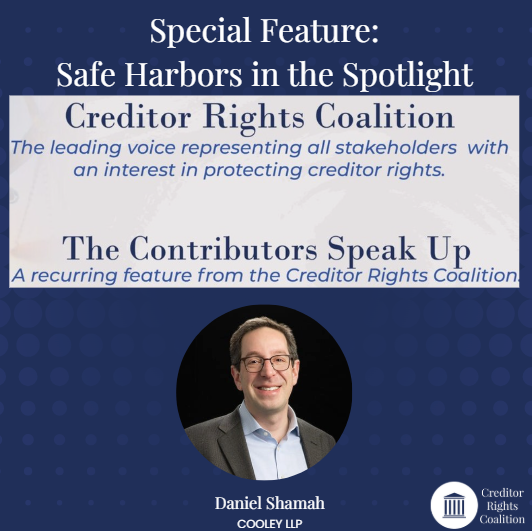Special Feature: Safe Harbors in the Spotlight

Questions Remaining after the 2nd Circuit’s decision In re Fairfield
On August 5, 2025, the Court of Appeals for the Second Circuit handed down a ruling in the Madoff case that foreclosed the liquidators of the Fairfield Funds from clawing back $6 billion in redemptions by investors in the Fairfield Funds on the grounds that the safe harbor for securities transactions barred recovery.
The major headline from the case is the Second Circuit’s ruling that the US safe harbors apply in Chapter 15 cases even to claims arising under non-US law. While as a practical matter the primary implications of the ruling in Fairfield are likely limited to Chapter 15 cases, there is another takeaway that may have broader implications: what is the scope of section 546(e) as it relates to different types of clawback claims plaintiffs can bring? The Second Circuit’s analysis of that question in Fairfield may have profound implications.
Some lower courts have grappled with the scope of the safe harbor when applying it to non-fraudulent transfer claims asserted under state law. The analysis often falls under the rubric of “implied conflict preemption,” a doctrine which asks whether a particular claim under state law conflicts with and frustrates a Congressional purpose expressed in a federal statute. On that basis, these courts have found these various “end runs” around section 546(e) to be ineffective.
The Second Circuit did not rely on the preemption doctrine in Fairfield, however, instead ruling that section 546(e) is not so limited. Specifically, the Second Circuit found that “avoiding” as used in Section 546(e) is not a term of art that is limited to fraudulent transfer or preference claims. Rather, the Second Circuit held that section 546(e) bars any claim brought by a trustee (or a foreign representative, as is the case here) that seeks to “avoid” a transfer, whatever the legal label or elements of proof.
An aside: The Second Circuit’s Tribune ruling is the most prominent 546(e) ruling from that court and expressly rests on preemption; the Second Circuit explains here that Tribune required the preemption analysis because the plaintiffs there were bondholders, not the trustee or debtor. The preemption question thus was whether section 546(e), which by its plain terms only applies to trustees, can also apply to creditors who regain standing to bring fraudulent transfer claims post-bankruptcy. In Tribune, the Second Circuit answered yes to that question.
All of which leads to the ultimate question: What other claims might be swept into the safe harbor under Fairfield? It is fairly well-settled in the Second Circuit that unjust enrichment claims are barred by 546(e). And we now know constructive trust claims fall in the same category. What about unlawful or illegal dividend claims? Common law restitution or fraud claims? Fiduciary-duty based claims against D&Os or controlling shareholders? We will have to wait and see.
